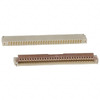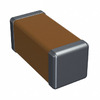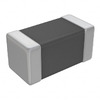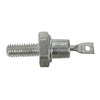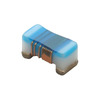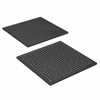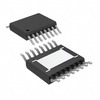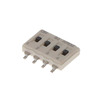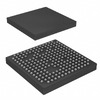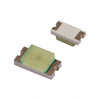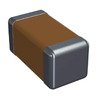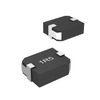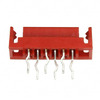LM741CM Operational Amplifier Guide: Datasheet, Circuit Designs, and Application Scenarios
The LM741CM is a versatile operational amplifier that outperforms standard industry models. Renowned for its robust performance and reliability, this operational amplifier is widely utilized in various applications requiring precise signal amplification. Through its superior design and wide range of operating conditions, the LM741CM has become an ultimate component in many electronic circuits. Furthermore, its adaptability extends to numerous practical applications, making it an exceptional choice for your environment. Understanding the characteristics and practical potential of this versatile device can significantly enhance its effective usage in actual scenarios. From audio production to medical instrumentation, the improvement of operational amplifier design manifests clear benefits, driven by experienced practices and thoughtful implementation.Catalog
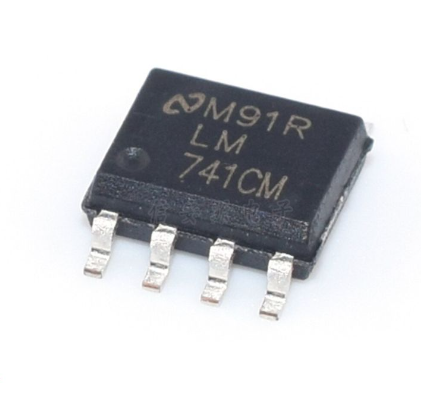
Overview of the LM741CM Operational Amplifier
The LM741CM operational amplifier stands out due to its high reliability and robust performance characteristics. Equipped with input and output overload protection, it ensures stable operation even when the common-mode range is exceeded, thereby preventing unwanted oscillations. This protective feature is similar to safeguarding sensitive components in complex electronic systems, which enhances overall reliability. Unlike the broader temperature range of the LM741/LM741A models, which operate from -55˚C to +125˚C, the LM741CM guarantees performance within a specific range of 0˚C to +70˚C. This targeted temperature range makes it ideal for applications that do not demand extreme temperature operations.
The input and output overload protection capacities of the LM741CM amplify its reliability. Overload protection is useful in preventing signal distortion and potential damage to the amplifier. For instance, in audio amplifiers, maintaining signal integrity is dominant in delivering high-quality sound. Practical experience in maintaining signal clarity in audio systems directly benefits from such robust protection measures.
Surpassing the common-mode range in an operational amplifier can often lead to instability and oscillations. However, the LM741CM circumvents this issue by design. This aspect is used in precision measurement instruments, such as digital multimeters, where any oscillations can lead to erroneous readings. By providing stability, the LM741CM ensures accuracy and reliability in such dangerous applications.
The LM741CM is designed to perform optimally within the temperature range of 0˚C to +70˚C. This range, although narrower than that of the LM741/LM741A models, meets the requirements of many standard laboratory and commercial applications. Specialized applications, like climate-controlled industrial environments, benefit from this reliable performance range, making the LM741CM a suitable choice.
LM741CM Pin Configuration
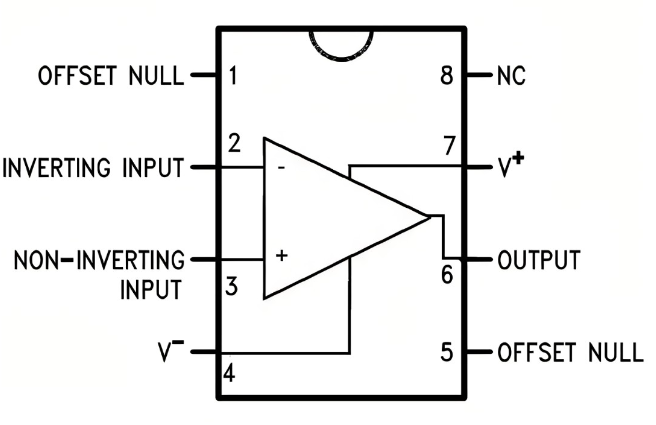
CAD Model of LM741CM
Schematic Representation

Physical Layout
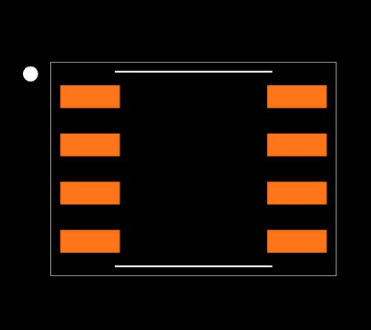
Three-Dimensional Visualization
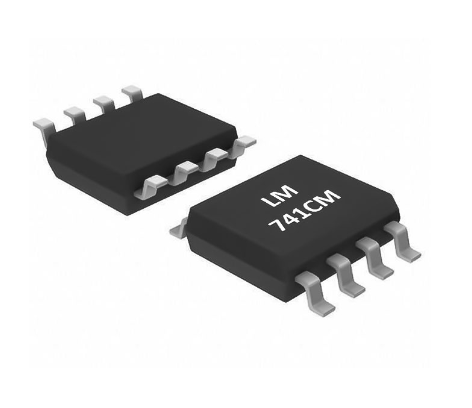
LM741CM Key Characteristics
|
Feature |
Specification |
|
Product Category |
Operational Amplifier |
|
Package Type |
8-SOIC (8-SOP) |
|
Supply Voltage |
±18 V |
|
Typical Input Offset Voltage |
2 mA |
|
Typical Input Bias Current |
80 nA |
|
Typical Supply Current |
1.5 mA |
|
Slew Rate |
0.5 V/µs |
|
Power Dissipation |
500 mW |
|
Operating Temperature |
0°C to 70°C |
Advantages of the LM741CM Operational Amplifier
Enhanced Short Circuit Protection
The LM741CM operational amplifier boasts robust short circuit protection, safeguarding electronic circuits from excessive current that could damage sensitive components. This feature ensures increased reliability and longevity, especially in environments prone to electrical faults. You can often choose op-amps like the LM741CM for their signal processing equipment, reassuring them that this protection minimizes the risk of unforeseen electrical anomalies.
Exceptional Temperature Stability
Temperature fluctuations can significantly affect the performance of electronic components. The LM741CM is crafted with superior temperature stability to ensure consistent performance across a broad temperature range. This characteristic is mostly advantageous in industrial and automotive settings, where ambient conditions can vary extremely. High-precision measurement instruments, for instance, benefit greatly from this stability, as temperature-induced drifts are reduced, leading to more accurate and reliable data.
Integrated Frequency Compensation
One standout feature of the LM741CM is its internal frequency compensation. This simplifies the design process and guarantees operational stability without the need for additional external components. The integrated mechanism ensures a smooth frequency response, making it highly valued in audio engineering and advanced signal processing. During these applications, the compensation mechanism minimizes distortion and phase shifts, thereby preserving the signal's integrity.
Versatile Wide Input Voltage Range
The LM741CM's wide input voltage range enhances its versatility across various applications, from low-level signal amplification to higher voltage circuits. This flexibility allows it to integrate seamlessly into different systems with minimal design changes. In renewable energy systems, for example, op-amps must manage fluctuating input levels; the LM741CM’s wide input range ensures operational adaptability and efficiency regardless of variations in input levels.
Precise Offset Null Adjustment
Offset null adjustment is an active feature of the LM741CM, enabling precise control over the amplifier's output to eliminate offset voltage. This adjustment ensures zero output voltage when the input is zero, used for high-fidelity and precision applications. In circuits where minute signal variations must be amplified without introducing notable errors, the capacity to fine-tune the offset is immensely valuable. Medical instrumentation, where accurate and stable readings are dominant, mostly benefits from this feature.
Technical Specifications
|
Type |
Parameter |
|
Mount |
Surface Mount |
|
Mounting Type |
Surface Mount |
|
Package / Case |
8-SOIC (0.154, 3.90mm Width) |
|
Number of Pins |
8 |
|
Number of Elements |
1 |
|
Operating Temperature |
0°C ~ 70°C |
|
Packaging |
Tube |
|
Published |
2001 |
|
Part Status |
Obsolete |
|
Moisture Sensitivity Level (MSL) |
1 (Unlimited) |
|
Base Part Number |
LM741 |
|
Operating Supply Current |
1.5mA |
|
Nominal Supply Current |
2.8mA |
|
Power Dissipation |
500mW |
|
Slew Rate |
0.5V/μs |
|
Amplifier Type |
General Purpose |
|
Common Mode Rejection Ratio (CMRR) |
70 dB |
|
Current - Input Bias |
80nA |
|
Voltage - Supply, Single/Dual (±) |
10V ~ 36V, ±5V ~ ±18V |
|
Output Current per Channel |
25mA |
|
Input Offset Voltage (Vos) |
6mV |
|
Gain Bandwidth Product |
1.5MHz |
|
Voltage Gain |
106.02 dB |
|
Power Supply Rejection Ratio (PSRR) |
77 dB |
|
Voltage - Input Offset |
2mV |
|
RoHS Status |
RoHS Compliant |
Internal Structure
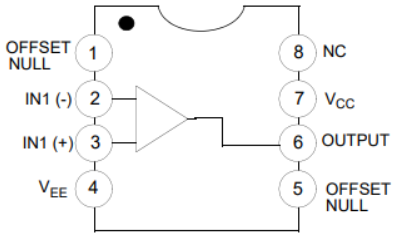
Detailed Schematic
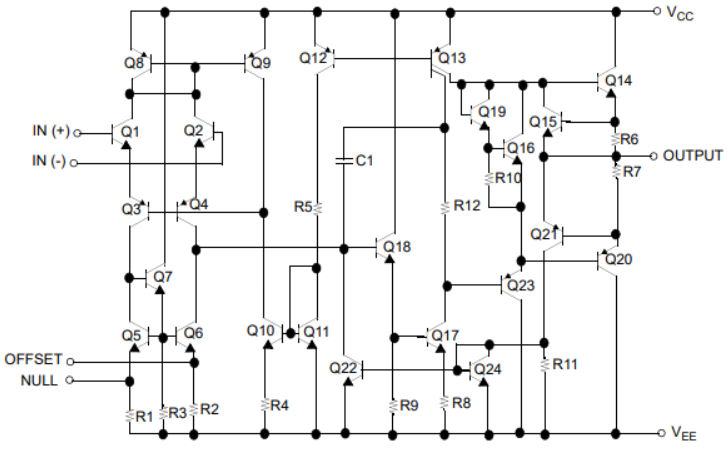
Alternative Components
|
Part Number |
Description |
Manufacturer |
|
LM741CN AMPLIFIER CIRCUITS |
IC, OP-AMP, SINGLE, BIPOLAR, DIP, 8PIN, PLASTIC |
RCA |
|
UA741CDG4 AMPLIFIER CIRCUITS |
General-Purpose Operational Amplifier 8-SOIC 0 to 70 |
Texas Instruments |
|
UA741CPE4 AMPLIFIER CIRCUITS |
Operational Amplifier, 1 Func, 7500uV Offset-Max,
Bipolar, PDIP8, ROHS COMPLIANT, PLASTIC, DIP-8 |
Rochester Electronics LLC |
|
5962-01-210-1006 AMPLIFIER CIRCUITS |
Operational Amplifier |
Renesas Electronics Corporation |
|
UA741TC AMPLIFIER CIRCUITS |
Operational Amplifier, 1 Func, 7500uV Offset-Max,
Bipolar, PDIP8, DIP-8 |
Fairchild Semiconductor Corporation |
|
LM741CD AMPLIFIER CIRCUITS |
IC, OP-AMP, SINGLE, BIPOLAR, SOP, 8PIN, PLASTIC |
STMicroelectronics |
|
LM741IN AMPLIFIER CIRCUITS |
IC, OP-AMP, SINGLE, BIPOLAR, DIP, 8PIN, PLASTIC |
RCA |
|
MC1741CDR2 AMPLIFIER CIRCUITS |
Operational Amplifier, 1 Func, 7500uV Offset-Max,
Bipolar, PDSO8, PLASTIC, SO-8 |
Motorola Semiconductor Products |
|
UA741CPSE4 AMPLIFIER CIRCUITS |
OP-AMP, 7500uV OFFSET-MAX, 1MHz BANDWIDTH, PDSO8, SO-8 |
Texas Instruments |
|
LM741CMX AMPLIFIER CIRCUITS |
Operational Amplifier, 1 Func, 7500uV Offset-Max,
Bipolar, PDSO8, LEAD FREE, SOP-8 |
Fairchild Semiconductor Corporation |
Application Scenarios for LM741CM
The LM741CM encompasses a wide array of analog applications due to its enhanced performance attributes. Its notable high gain and extensive operating voltage range render it ideal for the integrator, summing, and feedback circuits. In addition, it demonstrates compatibility with both single and dual power supply configurations, providing greater flexibility in circuit design.
Integrator Circuits
Integrator circuits convert a time-varying signal into a corresponding output representing the basic of the input. The LM741CM's high gain and stability ensure precise signal integration. This amplifier's low input bias current minimizes errors over extended integration periods, useful in applications requiring long-term accuracy, such as in automated control systems and signal processing.
Summing Circuits
In summing circuits, multiple input signals are combined to produce a single output signal. The LM741CM's wide bandwidth and high input impedance allow it to handle numerous input signals without substantial signal attenuation. This trait is mostly beneficial in audio mixing and signal conditioning applications, where clarity and fidelity are dominant. Practical experiences show that utilizing an operational amplifier like the LM741CM in summing configurations can lead to notably enhanced signal integrity and reliability.
Feedback Circuits
Feedback circuits employ a portion of the output signal to control the input, thus stabilizing the system. The LM741CM's ability to operate efficiently in various feedback configurations enhances system performance by reducing distortions and oscillations. Its robust design supports usage in numerous feedback scenarios, including voltage regulators and oscillators. Through practical integration, amplification systems benefit from improved stability and reduced noise, which is insistent in telecommunication and audio equipment.
Compatibility and Replacement
The LM741CM is designed for compatibility with numerous earlier models such as the 709C, LM201, MC1439, and 748. This cross-compatibility allows for seamless upgrades in existing systems without necessitating extensive redesigns. Field experiences confirm that the LM741CM consistently delivers superior performance across various applications compared to its predecessors, making it an invaluable component in modern analog designs.
Comparators
Comparators are ultimate components used to compare two voltages or currents and output a digital signal indicating which is larger. In various scenarios, comparators are instrumental in applications like zero-crossing detectors, voltage-level detectors, and analog-to-digital converters. For instance, within the world of control systems, they can be implemented to ensure safety measures by constantly assessing voltage levels and triggering protective mechanisms when thresholds are exceeded. Appreciating the exact behavior of comparators in noisy environments highlights their versatility and serious roles in modern electronic systems.
Multivibrators
Multivibrators, such as a stable, monostable, and bistable type, serve distinct purposes in different time-based functions. These circuits are utilized in generating clock pulses, timer circuits, and flip-flops, demonstrating their indispensability in digital electronics. For example, in communication systems, multivibrators can stabilize signal timing, thereby enhancing system reliability. Additionally, an astable multivibrator in practice can be a core element in pulse-width modulation, used for efficient power management in various devices. Insights into multivibrator stability and response times are useful for optimizing their deployment in high-precision applications.
DC Amplifiers
DC amplifiers, designed to amplify low-frequency signals, are used in applications where signal fidelity must be maintained. They find notable use in medical instrumentation, where precise amplification of biopotentials, such as ECG or EEG signals, is serious for accurate diagnosis and monitoring. The linearity and stability over temperature variations of DC amplifiers are serious parameters that can significantly affect the performance outcomes. Understanding the distinctions of offset voltage and drift in DC amplifiers aids in improving the design of sensitive measurement equipment.
Integrators or Differentiators
Integrators and differentiators are key in numerous computing and signal-processing tasks. Integrators accumulate the input signal over time, making them useful in applications like digital-to-analog conversion and signal averaging. Differentiators, on the other hand, accentuate signal changes, which is useful in edge detection and motion sensors. For example, in robotics, integrators can smooth sensor data to improve navigational accuracy, while differentiators can be employed to detect sudden movements or changes in direction. Mastering the stability and frequency response of these circuits is risky for their effective and accurate application in complex systems.
Active Filters
Active filters play a major role in shaping signal frequencies, suitable for audio processing, communication systems, and biomedical devices. They can effectively filter out unwanted noise, enhancing the quality and reliability of the signal. For instance, in wireless communication, active filters ensure that only the desired frequency bands are transmitted and received, thus minimizing interference and enhancing signal clarity. Practices such as tuning filter parameters to match specific application requirements and understanding the implications of filter orders on system performance are insistent for maximizing their efficacy.
Implementation Example
Noninverting Amplifier Circuit In-Depth Analysis
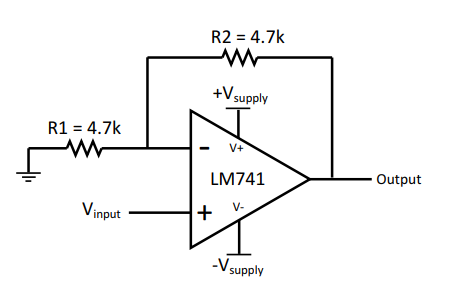
Packaging Details

Manufacturer Information
ON Semiconductor (Nasdaq: ON) is a remarkable player in the world of energy efficiency innovations. By providing cutting-edge technology, ON Semiconductor assists its clients in minimizing energy usage on a global scale. Their extensive portfolio encompasses solutions across various domains power and signal management, logic circuits, discrete components, and custom applications. These products serve a multitude of industries, such as automotive, communications, computing, consumer electronics, industrial applications, LED lighting, medical devices, military/aerospace technology, and power supply solutions.
ON Semiconductor's impact is profound across diverse sectors. The company provides dangerous components that enhance vehicle efficiency and safety. For example, advanced driver-assistance systems (ADAS) are part of their innovation spectrum, improving driving experience and reducing emissions. Solutions that optimize data transmission and reception bolster the reliability of communication networks. Processors and memory solutions from ON Semiconductor ensure that computing systems operate with maximum efficiency and speed, used for both consumer and enterprise applications. Their medical-grade components support the development of life-saving healthcare technologies, where precision and reliability are paramount.
The company is also celebrated for its reliable supply chain and rigorous quality programs. These attributes ensure that production processes maintain the highest standards, an active factor in sectors where uncompromising quality is a must. You can often observe that ON Semiconductor’s robust global presence across North America, Europe, and the Asia Pacific guarantees timely support and localized services. This geographic diversity reduces lead times and enhances customer support, fostering partnerships that thrive on mutual growth.
Datasheet PDF
LM741CM Datasheets:
LM741CN Datasheets:
Frequently Asked Questions [FAQ]
1. What is LM741CM?
The LM741CM is a robust operational amplifier recognized for its vital features such as input and output overload protection, stability beyond common-mode range limits, and resistance to oscillation. Its design has seen extensive application in various fields, from industrial automation to signal processing, highlighting its versatility and dependability in demanding environments.
2. How does LM741 operate?
For the LM741 to operate effectively, it requires power connections to V+ and V-. The V+ terminal receives a positive voltage, while the V- is grounded or provided with a negative voltage. An interesting aspect of its functionality is that when the inverting input voltage surpasses the noninverting input, the output voltage approaches V+, demonstrating its high sensitivity to differential inputs. This characteristic has practical significance in actual scenarios like analog signal amplification and sensor signal conditioning, where precise voltage differentials are used.
3. What differentiates LM358 from LM741?
Both LM358 and LM741 are widely used operational amplifiers, but they serve different needs based on their design. The LM358, a newer model, incorporates two operational amplifiers within a single IC, granting it a distinct advantage in applications requiring multiple amplifiers in confined spaces. In contrast, the LM741 contains a single operational amplifier. This difference means that while the LM741 is often preferred for single operational tasks where stable and high-gain amplification is needed, the LM358 finds its strength in more complex, multi-amp configurations. Both share an 8-pin configuration, ensuring ease of integration into existing designs. You can often appreciate the LM358 for its efficiency in portable and battery-operated devices, owing to its dual OP-AMP feature.
About us
ALLELCO LIMITED
Read more
Quick inquiry
Please send an inquiry, we will respond immediately.

ADS1015 A/D Converter: Pinout, Features, and Datasheet
on October 17th
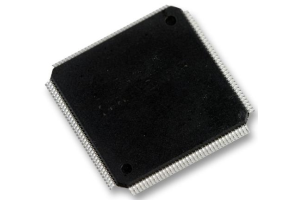
Mastering the STM32F767ZIT6: Pinout, Applications, and Datasheet Details
on October 17th
Popular Posts
-

What is GND in the circuit?
on January 1th 3272
-

RJ-45 Connector Guide: RJ-45 Connector Color Codes, Wiring Schemes, R-J45 Applications, RJ-45 Datasheets
on January 1th 2815
-

Understanding Power Supply Voltages in Electronics VCC, VDD, VEE, VSS, and GND
on November 20th 2640
-

Fiber Connector Types: SC Vs LC And LC Vs MTP
on January 1th 2265
-

Comparison Between DB9 and RS232
on January 1th 1882
-

What Is An LR44 Battery?
Electricity, that ubiquitous force, quietly permeates every aspect of our daily lives, from trivial gadgets to life-threatening medical equipment, it plays a silent role. However, truly grasping this energy, especially how to store and efficiently output it, is no easy task. It is against this background that this article will focus on a type of coin cell battery that may seem insignificant on the...on January 1th 1846
-

Understanding the Fundamentals:Inductance Resistance, andCapacitance
In the intricate dance of electrical engineering, a trio of fundamental elements takes center stage: inductance, resistance, and capacitance. Each bears unique traits that dictate the dynamic rhythms of electronic circuits. Here, we embark on a journey to decipher the complexities of these components, to uncover their distinct roles and practical uses within the vast electrical orchestra. Inductan...on January 1th 1808
-

What Is RF and Why Do We Use It?
Radio Frequency (RF) technology is a key part of modern wireless communication, enabling data transmission over long distances without physical connections. This article delves into the basics of RF, explaining how electromagnetic radiation (EMR) makes RF communication possible. We will explore the principles of EMR, the creation and control of RF signals, and their wide-ranging uses. The article ...on January 1th 1801
-

CR2430 Battery Comprehensive Guide: Specifications, Applications and Comparison to CR2032 Batteries
What is CR2430 battery ?Benefits of CR2430 BatteriesNormCR2430 Battery ApplicationsCR2430 EquivalentCR2430 VS CR2032Battery CR2430 SizeWhat to look for when buying the CR2430 and equivalentsData Sheet PDFFrequently Asked Questions Batteries are the heart of small electronic devices. Among the many types available, coin cells play a crucial role, commonly found in calculators, remote controls, and ...on January 1th 1799
-

Comprehensive guide to hFE in transistors
Transistors are crucial components in modern electronic devices, enabling signal amplification and control. This article delves into the knowledge surrounding hFE, including how to select a transistor's hFE value, how to find hFE, and the gain of different types of transistors. Through our exploration of hFE, we gain a deeper understanding of how transistors work and their role in electronic circu...on November 20th 1782



